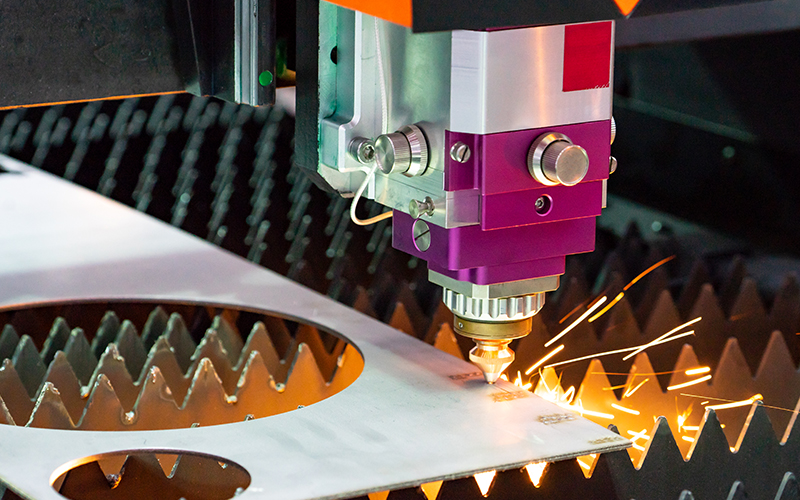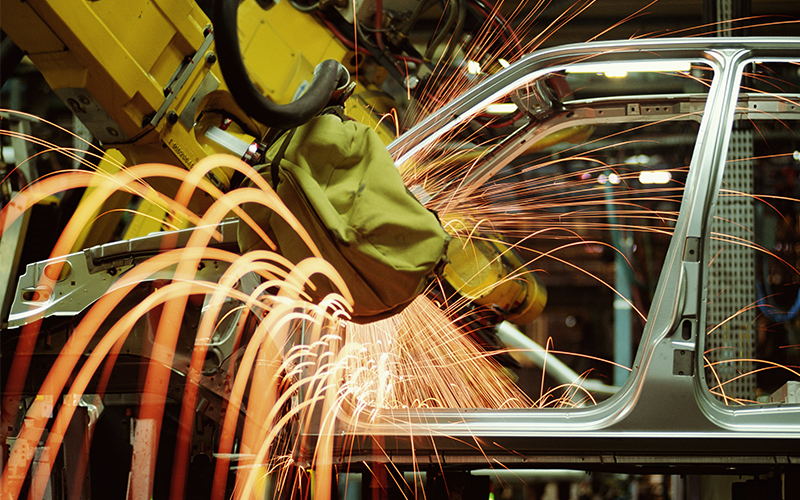Manufacturing
How AI is transforming resource allocation in manufacturing
The dawn of the 21st century brought with it an unfurling revolution, one where artificial intelligence (AI) began to reshape industries far and wide. Amongst these, the manufacturing sector stands out as a prime beneficiary of this technological renaissance. The infusion of AI in manufacturing has not just been transformative; it's been revolutionary, changing the very essence of how resources are allocated and managed.
Let us delve deeper into how AI solutions for manufacturing are metamorphosing resource allocation, ensuring that the industry is not just keeping pace with the times but is a step ahead, forging the future.
Why can't modern manufacturing live without AI?
Manufacturing involves the intricate management of interconnected systems of people, machines, and materials. Countless variables need balancing – from staffing levels on the production line to equipment maintenance schedules, inventory levels and logistics. Suboptimal allocation of resources in any part of the system creates bottlenecks and inefficiencies. While overstaffing may lead to idle workers and unnecessary labour costs, understaffing can cause output delays and missed targets. Similarly, imbalance in inventory may lead to stockouts or excessive carrying costs, whereas poor allocation of equipment capacity results in production bottlenecks.
This is where AI comes into play. Artificial intelligence, with its ability to analyse vast amounts of data in real time, offers manufacturers the opportunity to make more informed decisions, minimise waste and improve overall operational efficiency.
How can AI solve the manufacturing sector's resource puzzle?
AI's role in the manufacturing industry is comprehensive, affecting everything from supply chain management to maintenance. AI is all about making systems smarter, more adaptive, and more efficient.
Optimising the supply chain
By analysing data from various sources, including market trends, historical performance and real-time inputs, AI systems can forecast demand with remarkable accuracy. This foresight allows manufacturers to adjust their production schedules, manage inventory levels effectively and even negotiate better terms with suppliers.
Allocating human resource
Using AI in manufacturing transforms human resource management from a reactive, experience-based task to a proactive, data-driven strategy. By analysing patterns in employee performance, machine operation and production schedules, AI can optimise workforce allocation, improving productivity and employee satisfaction.
Enhancing quality control
Using machine learning (ML) algorithms and computer vision, AI systems can detect defects and anomalies faster and more accurately than human eyes. For instance, in an automotive assembly line, an AI-powered inspection system can analyse thousands of images per minute, identifying minute discrepancies in paint quality, alignment or component assembly that might escape manual inspection. This not only ensures a higher quality product but also reduces waste and rework, saving valuable resources and time.
Providing predictive maintenance
Traditional maintenance schedules are often based on time or usage intervals, leading to unnecessary maintenance or unexpected breakdowns. AI solutions for manufacturing change this paradigm by continuously monitoring equipment conditions through sensors and predicting failures before they occur. Maintenance can thus be scheduled just in time to prevent downtime, extending the life of the equipment and ensuring continuous production.
Optimising utility management services
AI systems can monitor energy consumption patterns across various processes and identify inefficiencies. It can detect machines that are consuming more power than usual, indicating a need for maintenance or adjustment. It can also optimise energy usage by synchronising energy-intensive tasks with periods of lower energy costs or adjusting the operation of heating, ventilation, and air conditioning (HVAC) systems in real time based on occupancy and weather data. This not only reduces costs but also contributes to sustainability goals.
Is AI's promise in manufacturing worth the challenges?
While the benefits of using AI in manufacturing are clear, there are challenges to overcome. Implementing AI systems requires significant investments in technology, training, and data infrastructure. Moreover, ensuring the security of sensitive manufacturing data is paramount.
However, the opportunities outweigh the challenges. Manufacturers who embrace AI-driven resource allocation are likely to experience increased efficiency, reduced waste and enhanced competitiveness. As AI technology continues to advance, the cost of implementation is likely to decrease, making it more accessible to a broader range of manufacturers.
The road ahead
As we look to the future, the potential of using AI in manufacturing only grows more exciting. With developments in ML, big data analytics and the Internet of Things (IoT), the integration of artificial intelligence in manufacturing is set to become deeper and more nuanced. The focus is shifting towards not just efficiency and cost-saving but also towards creating smarter, more responsive and sustainable manufacturing ecosystems.
Undoubtedly, the journey of AI is just beginning. Manufacturing is at the cusp of a new era where AI will redefine every aspect of resource allocation.
How can Infosys BPM help?
Through its Services, Utilities, Resources, Energy (SURE) department, Infosys BPM provides comprehensive solutions tailored for the energy and utilities sector. Leveraging advanced AI and analytics, Infosys BPM empowers manufacturing firms to optimise resource allocation, enhance operational efficiency and drive sustainable growth. Our expertise ensures businesses stay ahead in the rapidly evolving landscape, harnessing innovation for strategic advantage.






